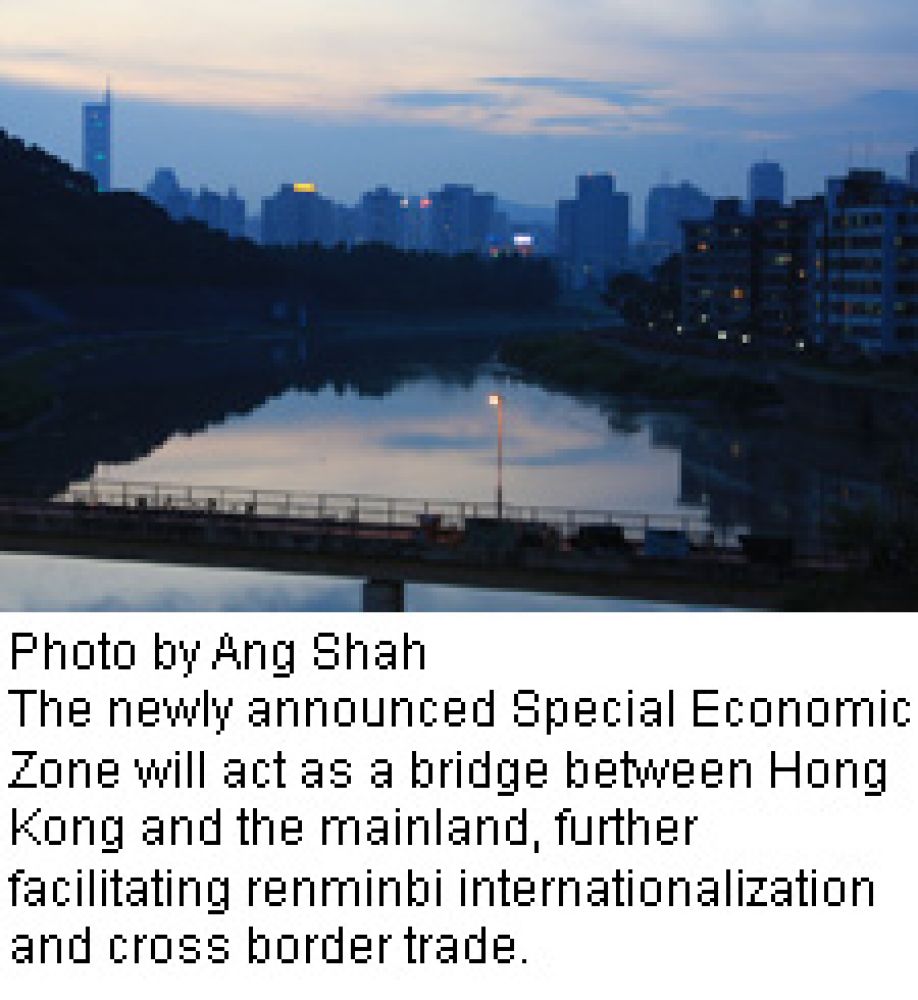Its special policies are targeted at businesses in six categories, including finance, taxation and telecommunication, but the most important of these is a measure that will enable Hong Kong banks to lend renminbi directly to mainland companies, significantly reducing the severity of China capital controls.
At present, Chinese clients can only borrow from Hong Kong-based banks in Hong Kong itself. To put that money to use on the mainland, they must seek approval from China foreign exchange regulator. The experiment in Qianhai will bridge the divide between China two systems, and much of the renminbi that has accumulated outside the People Republic is likely to flow back to its mainland source, where investment opportunities are both plentiful and diverse. According to a study by Bourse Consult, over 550 billion yuan (US$87 billion) was held in Hong Kong deposits by April, with another 60 billion in Singapore and 35 billion in London.
Financial flows between Hong Kong and Qianhai Bay will be matched by infrastructure links, including a bridge that will cut travel time to Hong Kong international airport down to 15 minutes. In many ways, the physical bridge is a metaphor for the project: just as Hong Kong has become a intermediary positioned halfway between the mainland China and international investors, Qianhai Bay will be halfway between Hong Kong and the mainland. It will have regulations modeled on Hong Kong's, including its own corruption watchdog, and it is already being referred to as a ini-Hong Kong. /p>
Qianhai Bay special regulations will play a decisive part in China overall move towards full internationalisation of the renminbi, which has picked up pace over the last three years. In July 2009, trade settlement in renminbi was allowed for the first time, under a pilot scheme restricted to transactions between Hong Kong, Macau and the ASEAN countries. A year later, the scheme was expanded to include every country in the world as well as 20 Chinese provinces and municipalities, allowing all imports and exports to be invoiced and settled in renminbi. The scheme took off slowly, but according to the People Bank, RMB340 billion of trade was settled in renminbi between June and November last year. To give investors a place to park these offshore renminbi, regulators have allowed a market for renminbi-denominated bonds to develop in Hong Kong, and in April the first of these so-called dim sum bonds was sold in London, by HSBC.
According Shenzhen mayor, Xu Qin, 21 companies have already registered to start work on a total of 170 projects in Qianhai Bay. Some see the special zone experimental regulations as a challenge to Shanghai, which has China largest stock market, but if successful, the looser capital controls being tested in Qianhai will be extended to Shanghai by 2015. It is also going to be difficult for China government to prevent capital invested in Qianhai from flowing out to the rest of the mainland, and the government has yet to clarifying what barriers it will erect to prevent arbitrage. In the short term, their point is moot: Qianhai Bay will not be completed until 2020, by which time many analysts expect to see full internalisation of the renminbi.
















